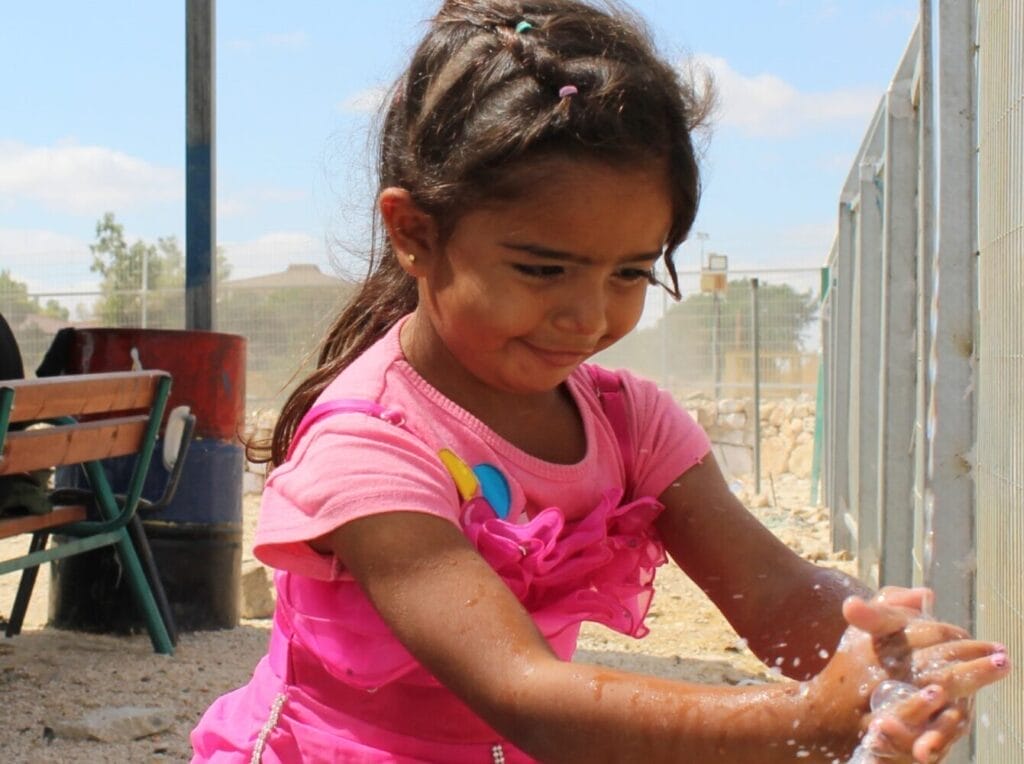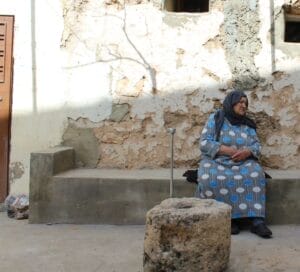
More than 2 billion people worldwide lack access to safe and clean water; in Italy, 7 million people are not connected to the public sewer system. In countries where water resources are not available at home, in 8 out of 10 families, women are the primary responsible for water collection, which is also a gender issue: 500 million people lack access to facilities and products to manage menstruation, and the absence, scarcity, and distance of water resources are linked to emancipation, the possibility of going to schools, and the risk of violence and harassment for women and girls.
These are some of the findings of Flowing Futures, our Atlas on global water access and availability and the consequences for human rights.
"The Atlas reflects WeWorld's approach, which has for years implemented a WASH (water, sanitation, hygiene) strategy in various countries: ensuring the right to water is indeed one of the pillars to protect human rights and, consequently, ensure that everyone can thrive," comments Anna Crescenti, WeWorld's WASH expert.
"Water-related services are more than just taps: safe drinking water and sanitation and hygiene services are essential to ensure people's health and well-being, contributing to improving other aspects of individual and community life, such as livelihoods, work, housing, and education, on one hand, and the development of resilient communities and a healthy environment, even in Italy, on the other."
The Atlas, which analyzes various themes related to water availability, from gender equality to inclusion, from community resilience to health, to climate, also presents several country fact sheets that analyze the conditions of each territory where we operate with reference to water resources and their availability.
HIGHLIGHTS: COUNTRIES AND GEOGRAPHICAL AREAS
The Atlas identifies the main areas under significant water stress, where resources are limited mainly due to climate change: among the areas with "critical" water stress are the Middle East (Kuwait, Oman, Qatar, Saudi Arabia, Israel, Jordan, Syria) and North Africa (Egypt, Algeria, Libya).
Italy
Although Italy ranks 11th in the category of the Global Index measuring countries' access to safe drinking water and sanitation services, there are several challenges related to water management:
- The amount of water lost in the network is considerable, 157 liters per person per day: an amount that would cover the water needs of over 43 million people for an entire year.
- Nearly 7 million people are not connected to the public sewer system: the service is completely absent in 40 municipalities with 386,000 residents, especially in Sicily.
- In 2022, 9.7% of families (almost 2.5 million people) reported irregularities in the water supply service; about 70% in the South, especially in Calabria and Sicily.
- The public service for treating urban wastewater is absent in 296 municipalities, where 1.3 million inhabitants reside. 67.9% of these municipalities are located in the South, especially in Sicily, Calabria, and Campania: here, the facilities are inactive because they are under seizure, undergoing modernization, or construction.
Other countries are affected by the lack or inadequacy of water and sanitation services:
- In Syria, due to the war, the water system has suffered severe damage to infrastructure, which is particularly exposed to health emergencies, such as cholera epidemics. 16.7 million people need humanitarian assistance, of which 7.2 million are displaced. WeWorld's WASH interventions in Syria have involved nearly 1.2 million people, with 135 toilets and sanitation facilities rebuilt in schools, and the distribution of over 3,000 personal hygiene kits, 1,835 menstrual hygiene kits, and 5,300 cholera prevention kits. Water infrastructure renovation works have involved 28 communities.
- In Burundi, 54% of the population lacks access to adequate sanitation services and only 62% have access to basic drinking water services, a figure that drops to 58% in rural areas compared to 91% in urban areas. In rural areas, 9 out of 10 people (96%) have limited access to basic sanitation services, without water and soap. 47% of public schools lack water services. With our intervention, 140 km of drinking water supply lines have been built and renovated, benefiting about 130,000 people; 6,500 families have been provided with WASH kits to improve hygiene and promote proper drinking water collection.
- In Kenya, only 63% of families have access to basic drinking water services (53% in rural areas); only 37% of families have access to basic sanitation services, and 29% suffer from limited access to sanitation services, where both water and soap are lacking. In rural areas, 1 out of 4 schools lacks water service, and only half of them have basic sanitation services. Among our interventions, the construction of 42 separate gender toilets to promote safer access to water services, especially for girls.
- In Nicaragua, climate change affects access to water and sanitation services: women are particularly affected, facing greater social and economic risks. Reduced water availability and poor water quality increase the risk of diseases such as cholera, diarrhea, and malaria; as of 2023, only 58% of health facilities had access to basic water services (39% in rural areas). Here, we focus mainly on the health and protection of women: promoting menstrual health and hygiene is indeed a starting point for addressing broader issues such as emancipation and gender equality. 29 schools (almost 12,000 children) have received hygiene and menstrual hygiene kits and support for vulnerable children.
WATER AND HUMAN RIGHTS
Water and Health
- Microbiologically contaminated drinking water can transmit diseases such as diarrhea, cholera, dysentery, and typhoid fever, posing a serious threat to people's health, especially children. Globally, 1.5 billion people still lack adequate sanitation services: this deficiency is responsible for about 90% of cases of diarrhea, the second leading cause of mortality in children under five.
- Diarrhea accounts for about 9% of all deaths among children under 5 worldwide: this translates to over 1,200 children dying every day.
Water and Gender Equality
- Access to safe drinking water and sanitation services for women has beneficial effects in terms of empowerment, education, health, and freedom from violence.
- In countries where water resources are not available at home, in 8 out of 10 families, women and girls are the primary responsible for water collection.
- Inadequate and non-gender-separated WASH services limit women's ability to safely and privately manage their menstrual cycle, posing risks to their sexual and reproductive health: a staggering 500 million people worldwide lack access to facilities and products to manage menstruation.
Water and Children's Rights
- Children's rights to health, education, and development are severely compromised by the lack of access to water, adequate sanitation facilities, and hygiene products.
- In 2021, 3 out of 10 schools worldwide lacked basic water services and more than 1 in 4 lacked basic sanitation services.
- In water emergency contexts, children's exposure to violence, abuse, abandonment, and exploitation can increase.
Water and Inclusion
- In 2022, more than 1 billion people in rural areas lacked access to basic water and sanitation services in their homes.
- People living in vulnerable situations are twice as likely to lack access to safe drinking water.
Water and Climate Change
- Climate change reduces the availability of safe drinking water and amplifies the risk of diseases caused by its contamination.
- Water-related extreme weather events have caused 11,778 reported disasters between 1970 and 2021, with over 2 million deaths and $4.3 trillion in economic losses.
- Climate change has a huge negative impact on water and sanitation services (WASH). At the same time, the WASH sector represents a significant opportunity to contribute to global adaptation and mitigation goals: WeWorld's interventions aim to build inclusive and resilient communities capable of addressing the consequences of water scarcity and natural disasters through the creation and strengthening of water systems, construction of flood-resistant facilities, implementation of water-saving technologies, promotion of renewable energy, and environmental awareness campaigns in schools.



